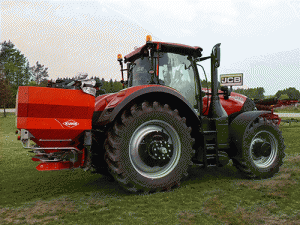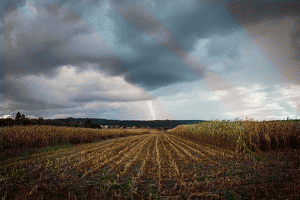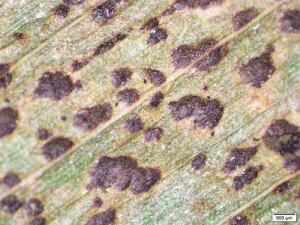Market side: Futures trading basics
LESSON 26: TECHNICAL ANALYSIS

This monthly educational series will feature the basic workings of the futures and options markets and how they can be utilized to help farmers with risk management.
GAP THEORY
Gaps are indicated on a chart when the current bar of a trading session is isolated from the previous bar by a space between the two. This is usually indicated by a higher or lower start to the current bar formation caused by a development that has influenced the price since the last bar was completed. The result on a price chart, is a space or gap that appears between the bars. This is a space were no trading has taken place and therefore there is no price data, resulting in a gap or space on a chart. Although this is a simplified answer, I will attempt to clarify other means why gaps occur and possible reactions by the traders who try to profit from them.
Gaps are a technical phenomena that may or may not mean anything depending on the underlying entity or even the amount of trading volume.
Price gaps can be created either to the upside or the downside of the previous bars. They can occur anywhere on the chart but to be of significance, they must have certain characteristics.
Gaps that appear randomly and quite often are known as common gaps and have little significance. They can appear on daily price charts as well as weekly or even inter day charts.
Stock charts are prone to gaps as any significant news that relates to the sector, industry, index or individual stock or commodity can result in a price gap. Stocks regularly gap on earnings announcements, merger and acquisition news, and on managerial shake-ups. Another common reason for prices to gap is low trading volume which basically means that there are not many bids or offers and any trading with this scenario may certainly be pulled away from the real price and create a gap of no-trading.
Gaps of significance generally will have one of more of the following features. An increase in volume during the gap development confirms the move is strong and there is power behind it. Most gaps are frequently accompanied by an increase in volume. Thus, interest in buying or selling accumulates and pushes price significantly in one direction or the other. Gaps also will occur in conjunction with other technical chart patterns such as triangles and wedges. Like most other aspects of technical analysis, the use of several tools is often needed to fully evaluate the technical activity.
The following price action after a gap occurs is to eventually move back into the void and fill the gap. This refers to the price of the underlying entity moving back to the price action point on the chart where the gap began. There are generally stop orders located in the void and these are usually triggered when the price enters the gap or void.
The purpose for the stop orders being placed in the gap is the mindset that, if indeed, this is a breakaway move, then the gap will not be filled. Price does not have to stay within the gap range and close inside of it. Rather, it only needs to trade through the gap. This means that the price will retrace back to close the trading void.
Most gaps do eventually get filled but there are cases where a failed stock has gapped down and continued the slide when the underling companies failed or went out of business and ceased to exist. These gaps were obviously never filled.

More typical is the example above of a gap which eventually was filled before the price continued on its way. •
Marty Hibbs is a 25 year veteran futures trader, analyst, and portfolio manager. Hibbs was a regular guest analyst on BNN for four years. He is currently a grain merchandiser with Grain Farmers of Ontario.
|
Lesson Definitions: Stop orders: A stop order, also referred to as a stop-loss order, is an order to buy or sell a stock once the price of the stock reaches a specified price, known as the stop price. When the stop price is reached, a stop order becomes a market order. A buy stop order is entered at a stop price above the current market price. |
DISCLAIMER: This information has been compiled from sources believed to be reliable, but no representation or warranty, express or implied, is made by the author, by Grain Farmers of Ontario, or by any other person as to its accuracy, completeness or correctness and Grain Farmers of Ontario accepts no liability whatsoever for any loss arising from any use of same.

























